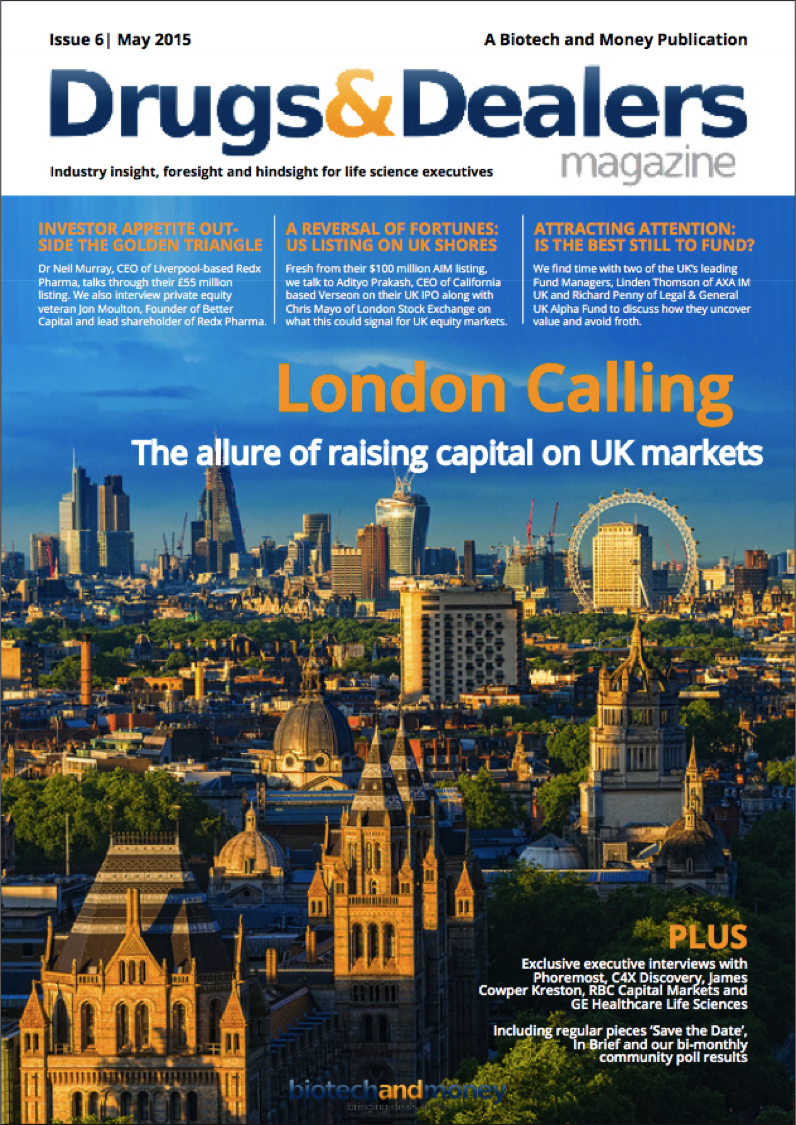Where to list your life science company and why?
What follows is the second summary from our evening panel discussion ‘From idea to IPO’ that took place at our most recent Biotechs and the City networking event.
Panelists:
- Maina Bhaman, Director of Healthcare Investments, Imperial Innovations
- Ajan Reginald, CEO, Cell Therapy Ltd.
- Asaf Homossany, Managing Director, EMEA, Nasdaq
- David Gough, Executive Director, Biomedical and Healthcare, NetScientific
- Dr Alastair Riddell, Chairman, Silence Therapeutics and Chairman, DefiniGEN
- Cailin McGurk, Executive Director, Healthcare Investment Banking, JP Morgan
Everyone knows that NASDAQ multiples are larger than European multiples. But equally, we’ve seen how Circassia was a great example of how that can be different. What drives the decision on where to list?
Valuation
Valuations will obviously be a hugely important factor for anyone considering an IPO. But what do you need to know about valuations in the US vs Europe?
The vast majority of US biotech go public between somewhere between $150 and $200m and then they raise money on top on the aftermarket. There’s a far smaller number in Europe, but there have been some much larger numbers. Cailin theorises this may be because of the way that research works in the US to have a less optioned out price discovery process with investors because there’s no pre-deal research, whereas in Europe you have an analyst going out doing pre-deal education and actually educating generalist specialists.
Cailin posits that there is an argument one could make that investors actually have more opportunity to have a more bottomed out view of valuations in the UK - potentially you could argue that Circassia is a good example.
Liquidity and Investor base
NASDAQ is much more liquid across the board and one of the beauties of the US capital market is that there are so many different types of funds and so many investors that you can always find enough investors and enough funds to invest in your company regardless of the size or stage of the life cycle of the company.
Cailin and all panelists agreed that liquidity on NASDAQ is much higher compared to any European market. From a UK point of view, if you’re an investor and you wanted out then firstly in the UK it’s not a very sensible thing to do.
However, if you’re an investor who is willing to stay in for the long-term then it could make sense to list in Europe. Maina pointed out in the UK there were a number of investors, such as Woodford, who were indeed prepared to take that long term view.
Management
Maina highlighted another important point when considering where to list: the management team. For a UK or European company to list in the US, the management team needs to be prepared to spend a fair amount of time in the US - and that brings challenges. You may end up having to change the management team altogether.
Asaf from Nasdaq disagreed, highlighting the fact that of about 200 companies in the region, the vast majority don’t have a presence in the US and they don’t have operations in the US. They do have people sitting their communicating with the local markets, and they must commit to being there 4 times a year for investor meetings, but it is perfectly possible to list in the US while maintaining a UK based management team.
Should you dual list?
An option for companies is to consider dual listing, but when is that appropriate and what do you need to consider?
Just doing a technical listing into the US once you have a listing on your own market in Europe is probably not going to achieve what you want to achieve in terms of access to capital, broadening your shareholder base. It needs to be accompanied by a significant liquidity event and technically you’re doing a second IPO on another market and calling it a dual listing. You have to consider how sustainable it is over time because it is a huge amount of effort to maintain 2 pools of capital - from a logistical standpoint you have to consider how your management will be stretched.
Asaf did point out though several examples of where dual listing can be successful, and highlighted that the processes on NASDAQ made it a real option for some companies.
See the other pieces in this summary:
If you want to attend our next scheduled Biotechs and the City event on 1st July, from 6pm - 10pm click below.





Leave a comment